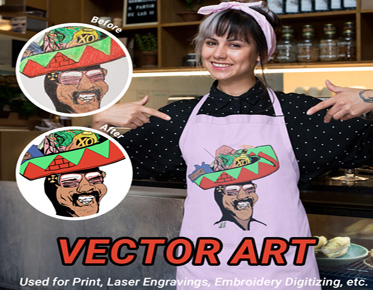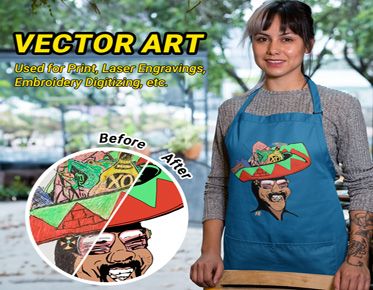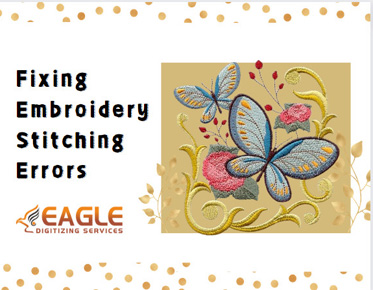What is the difference between Vector Graphics and Clip Art?
In the world of digital design, understanding the different types of
graphics is crucial. Two commonly used terms are vectorgraphics and clip art. They might seem similar at first glance, but they
serve different purposes and offer unique advantages. Let’s dive into the world
of these graphic types and unravel what makes each special.
Why
Understanding Graphics is Important for Designers
For designers, knowing the ins and outs of graphic types can make or
break a project. Choosing the right type of graphic affects everything from
scalability to quality to overall impact. By mastering these concepts,
designers can elevate their work and ensure it looks flawless across all
mediums.
Defining
Vector Graphics
What Exactly is a Vector
Graphic?
A vector graphic is a type of image made up of paths defined by mathematical
equations. These paths can be lines, curves, and shapes, which together form
intricate designs. Unlike raster images, which are made up of individual
pixels, vector graphics are constructed from these geometric elements.
Key Characteristics of Vector
Graphics
Vectors are known for their scalability and precision.
They can be resized infinitely without losing quality, making them ideal for
logos, illustrations, and any design requiring exactness. They are also
resolution-independent, meaning they remain sharp regardless of the display or
print size.
Common Uses for Vector Graphics
Vector graphics are widely used in branding, print media, and digital
illustrations. Logos, icons, and typography often rely on vector formats to
maintain clarity and consistency across various platforms. They’re also
essential in technical drawings and CAD designs.
The
Magic Behind Vector Graphics
How Vector Graphics are Created:
Points and Paths
Vectors are created using points and paths. Each point has a defined
position on the x and y axes of a plane, and paths connect these points with
straight or curved lines. This method allows for precise control over the shape
and placement of each element within the graphic.
Scalability: The Major Advantage
of Vectors
One of the biggest perks of vector graphics is their scalability.
Whether you’re shrinking a design to fit a business card or enlarging it for a
billboard, vector graphics remain crisp and clear. This scalability makes them
incredibly versatile and practical for various design needs.
Resolution Independence: Why
Vectors Always Look Sharp
Vector graphics are resolution-independent, meaning they look sharp at
any size. Unlike raster images, which can become pixelated when resized, vectors
retain their integrity. This feature is particularly important for designs that
need to be reproduced in different sizes and formats.
Popular
Vector Graphic Formats
SVG: Scalable Vector Graphics
SVG is a popular vector format used widely on the web. It’s supported
by most modern browsers and allows for interactivity and animation, making it
perfect for responsive design.
AI: Adobe Illustrator Files
AI is the native file format for Adobe Illustrator, the
industry-standard vector graphics software. AI files are editable within
Illustrator, making them ideal for detailed and complex designs.
EPS: Encapsulated PostScript
EPS is a versatile vector format commonly used for high-resolution graphics and print. It’s compatible with various design software and is often used for transferring artwork between different applications.
Tools
for Creating Vector Graphics
Adobe Illustrator: The Industry
Standard
Adobe Illustrator is the go-to software for vector graphic
creation. It offers a comprehensive set of tools and features that cater to
professional designers, allowing for intricate and precise designs.
CorelDRAW: A Powerful
Alternative
CorelDRAW is another powerful vector graphic editor known for its
user-friendly interface and robust feature set. It’s a great alternative to
Illustrator for those seeking a different toolset or workflow.
Inkscape: The Free and Open-Source
Option
Inkscape is a free, open-source vector graphics editor that offers
many of the same features as its paid counterparts. It’s a fantastic option for
beginners or those on a budget.
Defining
Clip Art
What is Clip Art?
Clip art refers to pre-made images and illustrations that
can be used in various design projects. These graphics are typically simple and
often come in both raster and vector formats.
Key Characteristics of Clip Art
Clip art is designed to be easy to use and versatile. It’s usually less
complex than custom graphics and is often used to add decorative elements to
documents and presentations.
Common Uses for Clip Art
Clip art is commonly used in educational materials, marketing
collateral, and digital content creation. It’s a quick way to add visual
interest without needing to create graphics from scratch.
Types
of Clip Art
Bitmap Clip Art: The Basics
Bitmap clip art is made up of pixels, similar to photos. While it’s
easy to use, it doesn’t scale well and can become pixelated when enlarged.
Vector Clip Art: A Hybrid
Category
Vector clip art combines the simplicity of clip art with the
scalability of vector graphics. This type of clip art can be resized without
losing quality, making it more versatile than bitmap clip art.
Pre-Made Clip Art vs. Custom
Clip Art
Pre-made clip art is ready-to-use and widely available, while custom
clip art is created specifically for a project. Custom clip art offers more
uniqueness and relevance but requires more time and resources to produce.
How
Clip Art is Created
Origins: Hand-Drawn to Digital
Conversion
Clip art started as hand-drawn illustrations that were scanned and
digitized. Today, it’s primarily created using graphic design software,
allowing for greater detail and variety.
Libraries of Clip Art: Where
Designers Source Them
Clip art libraries, both free and paid, provide vast collections of
images for designers to use. Websites like Shutterstock, Adobe Stock, and
Freepik are popular sources for high-quality clip art.
The Role of Stock Image Websites
Stock image websites offer extensive collections of clip art, catering
to various themes and styles. These platforms provide designers with easy
access to a wide range of graphics, streamlining the design process.
Vector
Graphics vs. Clip Art: The Showdown
Main Differences in Creation
Vector graphics are created from scratch using points and paths,
allowing for precise control and scalability. Clip art, on the other hand, is
often pre-made and designed for quick use.
Differences in Usage and
Application
Vectors are ideal for professional and detailed designs, while clip
art is perfect for quick, decorative additions. Vectors are used in branding
and technical illustrations, whereas clip art is common in educational and
casual contexts.
Comparing Scalability and
Quality
Vectors excel in scalability and quality, remaining sharp at any size. Clip art, especially bitmap, can lose quality when resized. Vector clip art offers a middle ground, providing scalability with the convenience of pre-made graphics.
The
Pros and Cons of Vector Graphics
Advantages of Using Vector
Graphics
Vectors offer unmatched scalability, precision, and quality. They’re
perfect for logos, illustrations, and any design that needs to maintain clarity
at different sizes.
Potential Drawbacks to Consider
Vectors can be complex and time-consuming to create. They also require
specialized software and knowledge to edit, which can be a barrier for
beginners.
The
Pros and Cons of Clip Art
Advantages of Using Clip Art
Clip art is easy to use and readily available. It saves time and
effort, making it ideal for quick projects and non-professional design tasks.
Potential Drawbacks to Consider
Clip art can lack originality and often doesn’t offer the same level
of detail or quality as custom vector graphics. Bitmap clip art, in particular,
can suffer from scalability issues.
When
to Use Vector Graphics
Best Scenarios for Vector
Graphics
Use vectors for logos, technical illustrations, and any design that
requires scalability and precision. They’re also ideal for print media, where
clarity is crucial.
Real-World Examples and Case
Studies
Companies like Apple and Nike use vector graphics for their logos,
ensuring they look perfect on everything from business cards to billboards.
When
to Use Clip Art
Best Scenarios for Clip Art
Clip art is great for educational materials, casual presentations, and
any project where speed and ease of use are priorities.
Real-World Examples and Case
Studies
Teachers often use clip art to create engaging classroom materials quickly. Businesses might use clip art in internal presentations to save time.
Combining
Vector Graphics and Clip Art
Hybrid Design Techniques
Combining vector graphics with clip art can enhance designs, providing
both precision and decorative elements. This hybrid approach leverages the
strengths of both graphic types.
Enhancing Clip Art with Vector
Elements
Adding vector elements to clip art can improve its quality and
scalability. This technique is useful for creating unique, high-quality designs
without starting from scratch.
File
Management Tips
How to Organize Your Vector
Files
Keep your vector files organized by project and category. Use clear
naming conventions and folders to make finding and editing files easier.
Managing Your Clip Art Library
Organize clip art by theme and type. Use tags and keywords to quickly
locate specific images, and regularly update your library to keep it relevant.
Common
Misconceptions
Myths About Vector Graphics
One common myth is that vectors are always complicated and difficult
to create. While they can be complex, tools like Adobe Illustrator and Inkscape
make the process accessible.
Misunderstandings About Clip Art
Some people believe clip art is outdated or unprofessional. However,
modern clip art libraries offer high-quality, versatile images that can enhance
many projects.
Trends
in Graphic Design
The Future of Vector Graphics
Vector graphics are becoming more integrated with interactive and
responsive web design. As technology advances, their role in digital media will
continue to grow.
The Evolving Role of Clip Art
Clip art is evolving with more sophisticated and varied styles. It
remains a valuable resource for quick, effective design solutions, especially
in educational and casual contexts.
Learning
Resources
Top Tutorials for Vector
Graphics
Websites like Adobe’s official site, Lynda.com, and YouTube offer
excellent tutorials for learning vector graphic creation and editing.
Best Sources for Quality Clip
Art
Stock image websites such as Shutterstock, Adobe Stock, and Freepik provide extensive collections of high-quality clip art for various needs.
Understanding the differences between vector graphics and clip art is
crucial for effective design. Vectors offer precision and scalability, while
clip art provides quick, easy-to-use images. Choose vector graphics for
professional, scalable designs, and consider using Eagle Digitizing for
high-quality vector art conversion. Opt for clip
art when you need fast, decorative elements. Knowing when to use each can
enhance your design workflow. Both vector graphics and clip art have their
place in the design world. By understanding their unique characteristics and
best uses, designers can create high-quality, impactful visuals. Utilizing
Eagle Digitizing can ensure your vector graphics are precise and professional,
further elevating your design projects.



